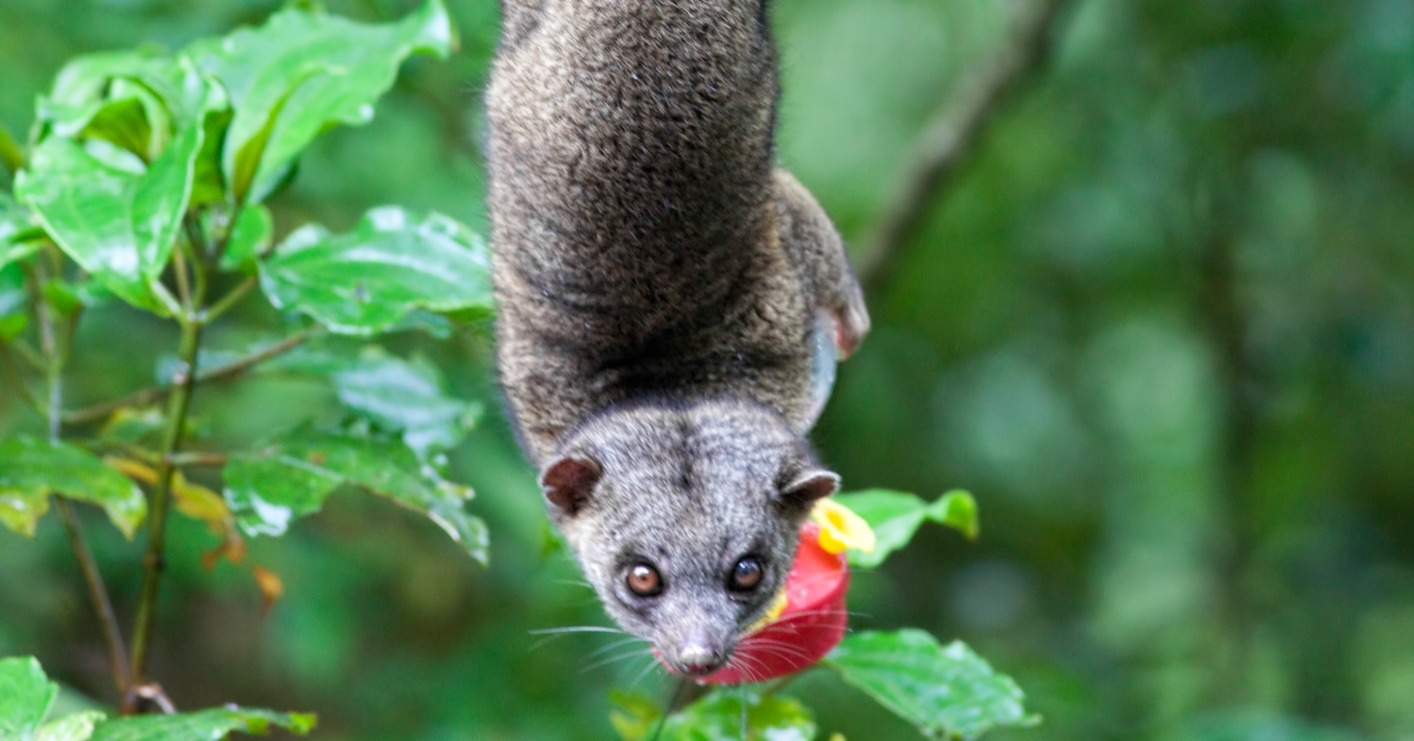Costa Rica is Geographically Unique (And Why That Matters)

We often talk about Costa Rica in terms of how biodiverse the country is, but it’s not always clear that that biodiversity includes more than just flora and fauna. There are many ways in which this country is unique thanks to its geography and its location. Let’s start by talking about its location on the planet since that is a key factor.

Location
Million years ago the areas now known as North and South America were on two different continents. Since each of those continents had evolved individually, there were unique types of flora and fauna on each continent.
Then an event occurred that caused two tectonic plates (the Caribbean and the Cocos) to collide. This didn’t just happen once. The two plates had been rubbing against each other for millions of years and as they did they gradually forced what’s known as the Central American Isthmus up off of the ocean floor.

It’s probably easiest to think of it this way when the earth's tectonic plates shift and break apart (as they were here) it allows the hot molten layer beneath it to escape forming volcanoes.
Here is an informative video describing how volcanoes are formed.
When a volcano erupts, it spews forth ash and lava, which cools to become rock, so each time it happens the amount of rock around the eruption point gets bigger. Over millions of years, this pile of rock became big enough to breach the surface of the ocean between the two continents.
Eventually, (around 3 million years ago) this resulted in the land bridge that now joins North and South America at present-day Costa Rica.

The diversity that we are so proud of is the result. Flora and fauna that descend from both of the original continents now coexist here, intermingling with two entirely separate ocean ecosystems. Another important factor is that we just happen to be 10 degrees from the equator, and that proximity to the sun allowed more of those creatures to survive the last ice age.
How Our Volcanic Terrain Creates Unique Microclimates
Since we already know that Central America was created by volcanoes, you won’t be surprised that there are quite a few of them here in Costa Rica. They form a line, called the Central American Volcanic Arc. If you look at a map, you will notice that they run from the Northwest where Costa Rica borders Nicaragua to the Southeast border of Panama creating a ridge of mountain peaks that effectively separates the country into two sides. Each of these sides is unique, with weather patterns that are affected by different oceans and water systems that flow into those oceans. When this type of division is created, it is known as a Continental Divide.
This ridge is divided into 2 mountain ranges the Cordillera Central and the Cordillera de Talamanca which runs down into Panama.

You might be interested to know that there are 5 volcanoes that are still active and 61 dormant or extinct volcanoes. (For a full list, click here) Not only were these volcanoes responsible for the creation of the continent, but they created it in such a way that the elevation goes from sea level at the coasts to 3821 meters above sea level at its highest peak (Mount Chirripo).
Why does that matter, you ask? Because different types of flora and fauna flourish at different elevations. Not only did we end up with plants and animals from both continents, but we have the perfect conditions for high-altitude animals, low-altitude animals, and everything in between to thrive!
Weather and Soil
You might wonder why we’ve combined two such different topics together into one section. It’s because each has a part to play in the creation of the many different ecosystems that exist within Costa Rica.
An ecosystem needs various things to survive. Let’s take the forests of Monteverde as an example. In order for the trees to grow, they needed the rich volcanic soil to provide nutrients and they needed sufficient water, which is provided by the country’s high annual rainfall.
When there are plants and trees, there are habitats for the animals that live in them, as well as the animals that eat them. Those creatures attract animals that in turn eat them… and so on, and all of these plants and creatures eventually die and decompose which creates a sort of compost that enriches the soil. And so the cycle continues and the ecosystem thrives.

To learn more about the interconnected nature of our forest, click here.
Of course, some ecosystems thrive in hotter, dryer climates, and some in warmer wetter climates. That’s where the elevation comes in. Even in a tropical environment like Costa Rica, the higher up you go… the cooler the temperature is.
Within Costa Rica you can find temperatures as low as 50 degrees and as high as 95 degrees Fahrenheit, so there is a climate and set of conditions that is ideal for almost every creature.
Microclimates of Costa Rica
There are 5 major recognized climates (average weather conditions) on our planet:
-
Tropical
-
Dry
-
Temperate
-
Continental
-
Polar
Three of these (the top 3) can be found in Costa Rica. They can be further broken down into climate zones (of which we have 12), and microclimates (meaning areas with different atmospheric conditions).
Each of these individual areas contains different types of plants and animals, and that means that exploring each one can be a vastly different experience.
For example, thanks to these differences in climate, you will find 7 distinct types of forest within Costa Rica:
-
Tropical Rainforest
-
Tropical Dry Forest
-
Tropical Cloud Forest
-
Tropical Lowland Forest
-
Riparian Forest
-
Mangrove Swamp
-
Transitional Forest
Because the weather and soil are different, the plants are different… which leads to different types of fungi and algae, which feed different insects, which attract different birds… and so on, until a unique ecosystem is developed that is specific to that climate.
So it’s no surprise a country as diverse in terrain as Costa Rica has developed habitats for so many plant and animal species.
What Does That Mean for You?
By now you might be wondering what this means to you as a tourist. After all, not everyone is interested in biology, mineralogy, or meteorology.
It matters because it is this strange and unique collection of geographical features that has created a country where you can soar through the forest canopy on a zipline high in the mountains one day… and surf the waves the next.
It has provided the type of growing conditions that provide residents and visitors alike with the kind of fresh and delicious cuisine that makes your mouth water, including varieties of fruits and vegetables that can only be found in our unique climate.
It has given us sloths, Resplendent Quetzals, monkeys, orchids, whales, turtles, and so many more amazing creatures to discover. And it gives us trails to explore, whether by foot, bike, ATV, or horseback.

Geography may not seem fascinating at first, but when you understand it, you understand why Costa Rica is so well suited for adventure, cuisine, and vibrant biodiversity. As for discovering it, we hope that you will let us guide you along the way, and introduce you to the wonders of Costa Rica, and more specifically, our home, Monteverde.
Just click here, or call +506-4002-2599 in Costa Rica, or 1-833-362-6832 (toll-free from the US and Canada) to learn more.




.jpg)
